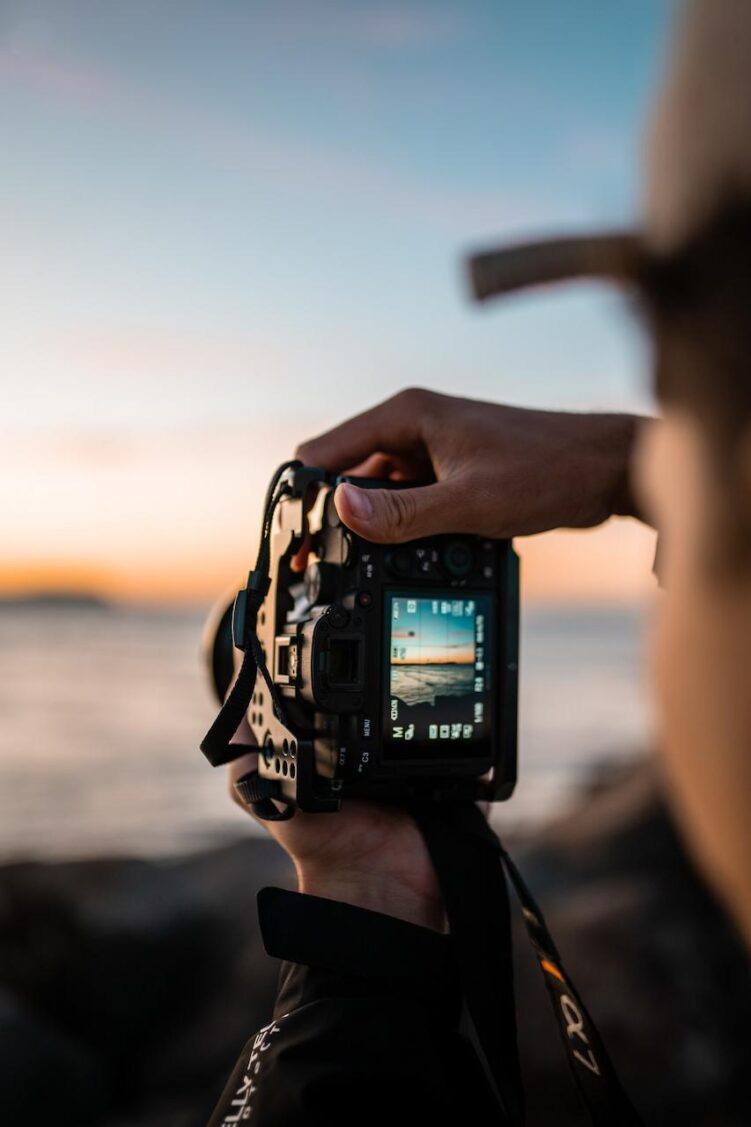Before taking a picture with a camera or phone, the photographer must first answer the questions “What am I seeing? Why is this picture taken? How do I convey the idea to the viewer?”. And then the author decides how to use the known elements of the composition of the frame. Thanks to this, the author can control the viewer’s mood, draw his attention to important objects in the picture plane and hide “secondary elements”. There are many rules of composition and there are just as many successful photos where they are violated. We have prepared a selection of the basic and most important rules that will help make your photos better.
“The Golden Ratio” – Rule of Thirds
The image of the object being photographed can be divided into three parts, both vertically and horizontally. The result is a kind of grid that divides the image into several zones. This grid can often be seen in the viewfinder of cameras or you can switch it on yourself.
It is customary to place important objects or lines in the image to be photographed at the intersection points and lines of this grid. For example, if you want to emphasise the sky, align the horizon line with the bottom line of the grid. As in this photo with the lone pine tree at the top.
It is also common to place the hero of your subject (a tree, a person, a flower, a building) on one of the four active points of the grid of thirds. Using the rule of thirds, you can emphasise important objects in the frame. They look more attractive in these places than in the middle, for example.

The Format
Is the frame horizontal or vertical? That’s a question you need to answer before you even press the button, because the format you choose will also determine whether you want to shoot the subject. If you want to shoot a tall tree or a full-length person, turn the camera vertically.
Often we see photographs in standard formats, landscape or horizontal. But the format can be anything: square, round, triangular or even arbitrary, irregularly shaped. The format is a way of expressing the boundaries of an image as well as its semantic content. Walking amongst skyscrapers, their grandeur and height is best shown through a vertical photo.
Lead Lines
Use natural or artificial lines to guide the viewer’s eye through the photograph to an important object. It is these leading lines, real or imagined, that are the route for the viewer’s eye in the landscape. These can be any lines – roads, wires, paths, rails, etc. And you don’t have to use only flat lines.
Each line in the frame can have a different sensual load. Horizontal lines are lines of constancy, calmness, serenity, vertical lines are lines of strength, stability, power. Diagonal lines create a sense of movement and can accentuate the depth of a shot. Rising and falling diagonals are seen as lines of development and decline, departure and return, etc.
Close-up
Close-ups are one of the easiest ways to get rid of trash in the frame and let the viewer know who the hero of the shot is. Writers often use close-ups to draw the viewer’s attention to specific details. This can be used to heighten the viewer’s sense of feeling by focusing on the details the author wants. Of course, close-ups of flowers, bugs and butterflies can also be used as a screensaver for your phone or computer.
Space
It should be remembered that the development of movement in the picture often takes place from left to right. To give a simple example: in cartoons, hunters go hunting in the forest from left to right, while from right to left they return home with their prey. So leave a free space in front of your subject in your photos for his or her mental movement.
If you photograph a car or an animal that is in motion, you need to leave a free space in front of it (unless you have the task of showing that the object is leaving the frame). Likewise, if the person or animal in the frame is looking somewhere.
It’s not the best shot, unless it’s intended for something. You might get the feeling that something is about to happen behind the child.
Angle
An unexpected angle will always attract attention. The same subject can be photographed in completely different ways. There is no limit and the number of photo options depends only on the author’s imagination.
The same subject can be photographed from different angles.
Try to shoot in a new way, different from others. But here too, there are some rules to keep in mind. Keep in mind that objects that are close to the camera will appear larger than those that are removed. Everyone probably remembers wedding photos like “Take a picture, like she’s on my arm!”. When photographing people from above or below, remember that body proportions will be distorted in the photo.
Colour Composition
Each colour has a different effect on a person’s emotions. Warm colours like orange, yellow and red evoke summer, sunshine and warmth. The same associations arise when you look at photographs in these colours. The cooler colours of blue, pink and purple are associated with cold, winter and water.
The saturation of these colours also has an effect on the emotions of the viewer. Soft tones create a feeling of peace and nostalgia. Bright colours are used to draw attention, so they are often used in advertising photography.
But avoid bright colours away from the main subject so as not to distract the viewer.
Perspective
A person sees all objects in volume, but the modern camera is not yet capable of creating three-dimensional images, so it transmits only a two-dimensional, flat picture. But that’s no reason to despair, because volume can also be shown with other elements. In order to transmit the volume and perspective in the picture you must use the foreground, middle and background.
For instance, a landscape picture could have flowers in the foreground, forest in the middle and cliffs in the background. This allows the viewer to see and imagine the volume and scale of your image.
Volume can also be conveyed using the technical capabilities of the camera. With the aperture open as much as possible, the background of the image is blurred while the subject in the foreground remains sharp, which also gives a sense of volume.
